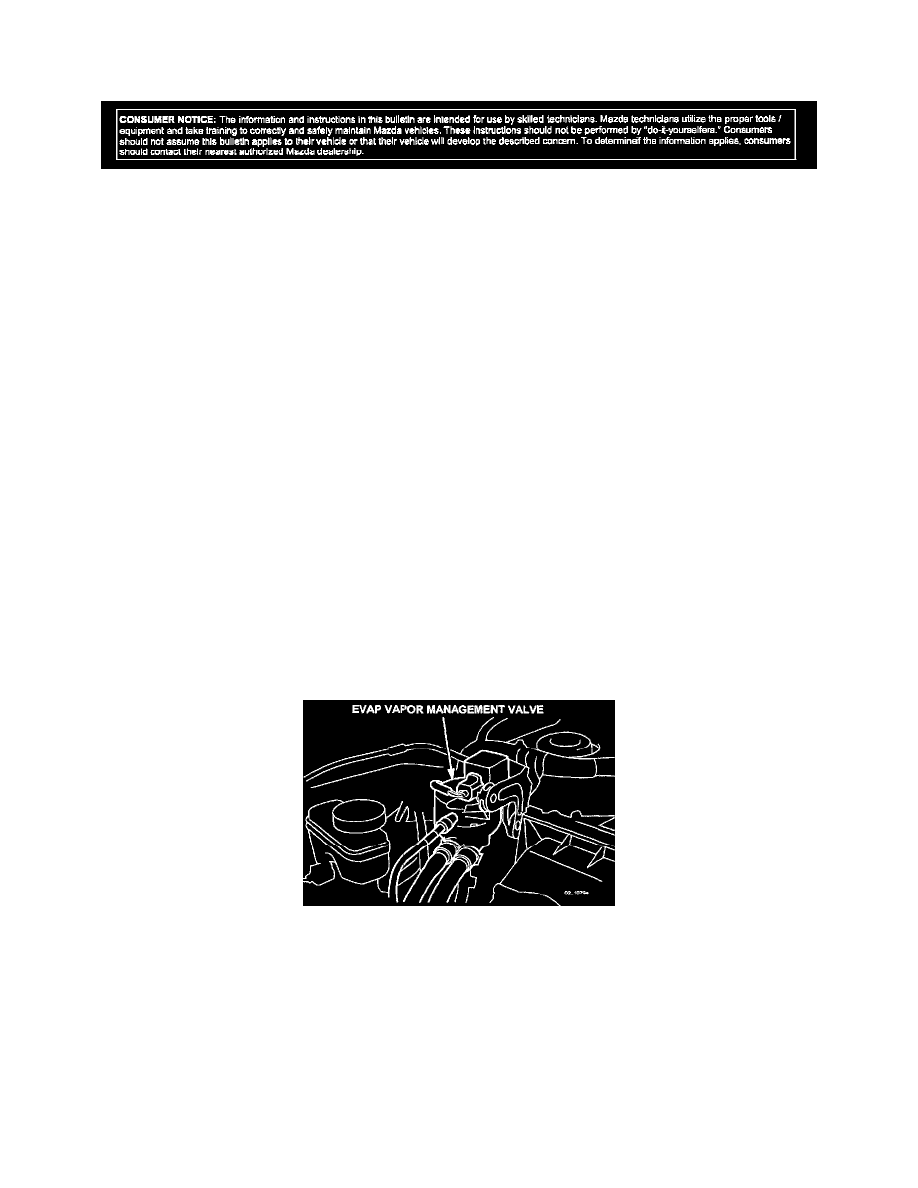Tribute LX 2WD V6-3.0L DOHC (2001)

NOTE:
Parts will be collected for warranty inspection and any unnecessary replacements will be debited.
Disclaimer
Repair Procedure
NOTE:
This concern may have several causes so it is important to thoroughly complete each step.
NOTE:
Make sure the vehicle is in the following conditions when performing all tests described below:
^
Transmission in Park
^
Engine at idle at approximately 750 RPM
^
Engine temperature should be at least 88°C (190°F)
^
All accessories and the engine cooling fan should be off
NOTE:
Parts will be collected for warranty inspection and any unnecessary replacements will be debited.
1.
Inspection of Evaporative (EVAP) Vapor Management Valve
a.
Determine if the Evaporative Vapor Management (EVAPVM) duty cycle is operating properly. Monitor these parameters using PIDs -
EVAPVM # (in percent) and FTP (in volts).
-
If EVAPVM is functioning correctly, the duty cycle should increase to 84-100% with the FTP decreasing to approximately 2.2 volts and
then reset back to 0% duty cycle while FTP hold at approximately 2.6 volts. If the duty cycle does not increase within 5 minutes, turn on
the headlights and the AC with the blower on high. The duty cycle should start increasing within 5-10 minutes. Do not replace the
EVAPVM valve if the duty cycle functions correctly.
-
If the duty cycle stops increasing and remains at 95-100% while Fuel Tank Pressure (FTP) holds at approximately 2.6 volts, replace the
EVAPVM valve with part number AJ03-18-741A.
b.
Verify corrective action, then proceed to Step 2.
2.
Inspection of EVAP System Vent Line.
